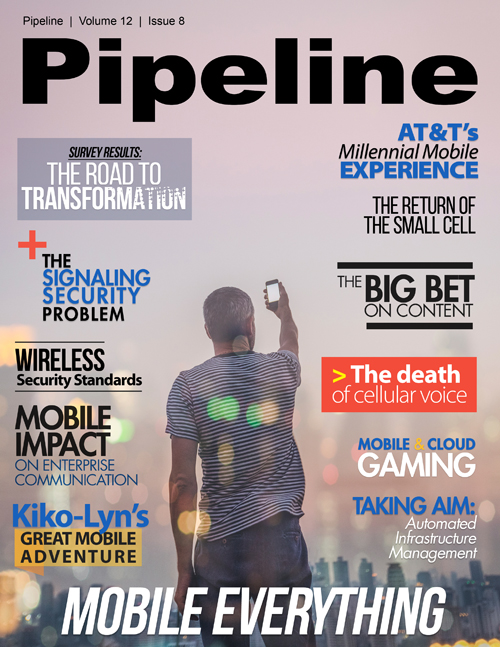The Road to Transformation
Whether we're talking about a mother buying groceries with a mobile phone in Africa, a millennial catching up on their favorite show on the way home from work, a soldier in Afghanistan video calling his family at home, or an automated emergency dispatch call from a connected car – this technical evolution now touches all of us and it would not have been possible without the opportunity, transformation, innovation, and fuel that occurred along the way.
In fact, this transformative path may be more of a cycle which can be applied to new transformations and reapplied to environments prone to change. If we look at the stabilization of political climates and deregulation throughout parts of Latin American and Asia, the transformation is just beginning. But, if you look at more mature markets such as the U.S., Europe, Japan, and South Korea – there appear to be subsequent cycles of transformation around each new innovation. By looking into the state of global digital transformation today, perhaps you can gauge where you are in this cycle and even contemplate what’s ahead.
Global Perspectives
When CSG International commissioned Pipeline to conduct a global survey of service providers to gauge their state of digital transformation we were certainly intrigued by the opportunity to pull back the curtain and gain a perspective from inside the companies that have been and are struggling to transform. Pipeline collected responses from key decision makers within service providers from every major market spanning all stages of transformation. However, the results were remarkably uniform and provided keen, invaluable insights into the state of transformation today.
"So many opportunities in life come from being in the right place at the right time," Ken Kennedy, CTO of CSG International provided in a statement to Pipeline regarding the survey
results. "When it comes to offering digital services to consumers on-the-go, the communication and entertainment services industry is in a state of transformation to capitalize on the ‘right
place, right time’ opportunity."
Opportunities
The availability of high-speed, reliable bandwidth and connectivity has opened the door to a new realm of possibilities. The majority (73 percent) of service providers surveyed indicated that they anticipate all or most of their services to be digital within the next three years. Industry leaders, such as CSG International have called this reaching DSP state, or becoming a Digital Service Provider. The survey revealed a 17 percent increase from those that have reached a DSP state today and those that plan to within the next three years. This illustrates significant growth in a very short time frame, indicating an aggressive focus on digital transformation by key service providers globally.
At the same time, wireless connectivity has become more pervasive and embedding that connectivity into devices has become less expensive. This has led to a boom in connected devices, encompassing Machine to Machine (M2M) and the Internet of Things (IoT). According to research firm IDC, the IoT market is predicted to exceed 7 trillion dollars by 2020. The majority of service providers indicated that they view the M2M/IoT opportunity as having the most significant revenue opportunity in the next three years.
Respondents also indicated vertical growth into new markets as a key, short-term revenue growth opportunity. Partly fueled by the proliferation of connectivity and new connected devices, it seems service providers globally are also exploring where they can add unique value outside of the traditional enterprise and residential industries they serve: industries such as healthcare, finance, smart grid, shipping, and so on.
Cloud services also ranked highly with service providers related to its revenue growth potential. In particular, offering cloud-based business services, which suggests that service providers see a significant growth opportunity to expand revenues from their traditional enterprise business by extending cloud-based collaboration, communication, and infrastructure solutions.
Disruption
If we look at the areas where service providers plan to invest in the next three years, it appears to be directly related to competition and innovation initiatives. This is to be expected as these new opportunities spur change, competition and subsequent transformation cycles.
An overwhelming majority of service providers who participated in the survey (nearly 70 percent of responses) indicated that investing in creating a differentiated multi-device experience was a top priority in the next three years. As connectivity itself continues to become commoditized and the number of connected devices continues expand, ensuring a consistent, quality, and unique experience across these devices – such as homes, phones, cars, and computers – is critical, and perhaps a little obvious. How service providers plan to do so, however, is most likely the bigger question.



















